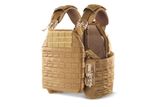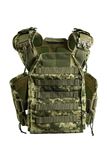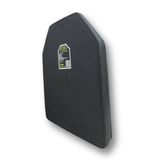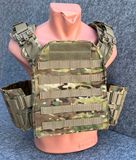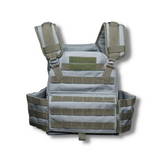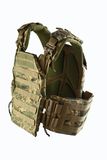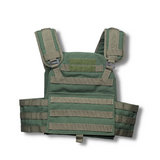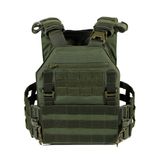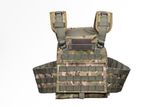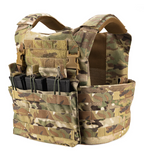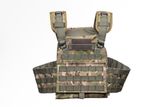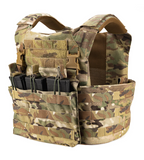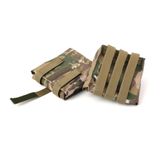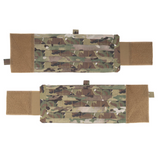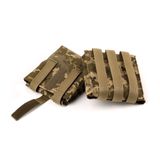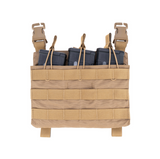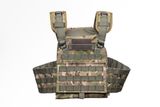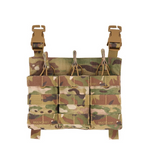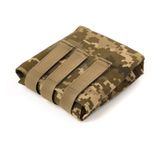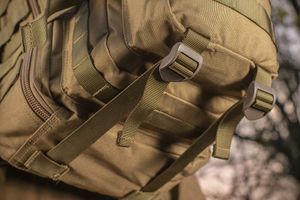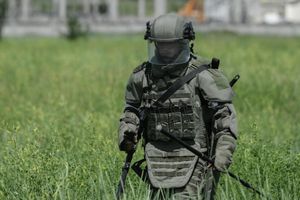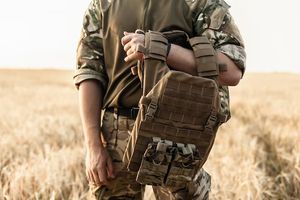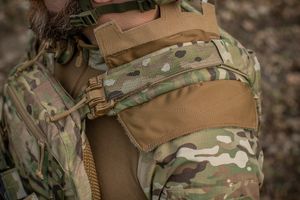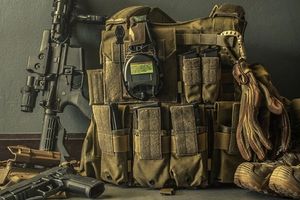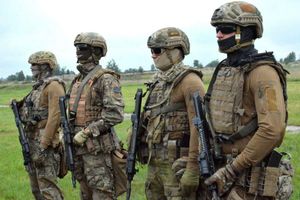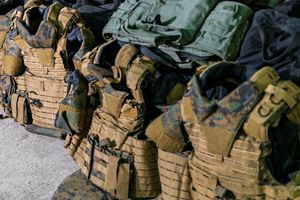Body armor is a type of protective clothing designed to repel or absorb projectile attacks. While ballistic protection against bullets is the primary use of body armor, the level of protection can extend to absorbing impact from weapon rounds and debris.
There is a huge variety of bulletproof vests on the market today. They are suitable for protection against many threats. It is important to be aware of the different types of armor available before making a purchase. Not all body armor provides the same level of protection against hazards. If you decide to choose body armor without knowing its protective capabilities, you may end up with less protection than you really need. This little guide will help you learn more about the different types of body armor.
Plate carriers, plate carriers, plate carriers, plate carriers and plate carriers
The terms "body armor", "bulletproof" and "bulletproof vest" are well known. They are all interchangeable, but do not necessarily mean the same thing. There are different types of equipment.
Plate carriers is a type of carrier produced in the form of lightweight vests. By themselves, they do not protect against bullets or debris. But they have pockets - an armored plate is inserted inside, which creates protection. It can be hard or soft, and a combination of different materials is also used. Plate Carriers allow the user to select the desired level of ballistic protection through the use of armor plate pockets. Plate carriers allow you to wear front, back and side plates while protecting your entire torso.

For most law enforcement and military personnel who need protection against threats, plate carriers are the first choice because it is easier to get the right level of protection or adjust it.
Size and way of wearing body armor
There are two things you need to be aware of in order to choose the right size vests.
- the first value is the size of the vest, which should fit you as clothing;
- the second is the size of the plate suitable for it.
These two options are usually relevant. For example, someone who needs an XXL size carrier may also need larger slabs. Always pay attention to which plates fit.
There are separate plates for women. They are smaller and lighter, making them easier to carry. Among these products, you can find mini sizes that can protect the most fragile girls. In our store you will find armor plates for women in assortment.
The vest should fit snugly against the body, but should leave a small gap to reduce the risk of injury from bullet energy. If the vest is too loose or too tight to the body, you can wear a cumberband belt to ensure the correct fit. Most modern plate carriers are compatible with such belts.
It is also important to wear the vest correctly to ensure maximum protection. Improper wearing reduces its level, which increases the risk of organ damage. The top edge of the anterior plate should be in line with the top of the sternum. Thus, all internal organs will be protected, and the lower edge will not interfere with movements in the belt.
The back plate should run along the top edge at the half-blade line. This ensures the protection of the lungs and heart from behind.
Not everyone pays attention to side plates, but they are extremely important for full protection. Many modern carriers have adjustable side pockets. To ensure the protection of the lungs, we recommend that you raise them as high as possible, but so as not to limit the mobility of the hands.
Types and styles of body armor
Body armor is available in 2 main styles - hidden and open. The hidden armor is designed to be worn under clothing. Such models are smaller, their thickness is closer to the "mini". Protective vests designed to be worn over clothing are called open. They are common among the military.
Hidden vests
They are usually produced in light and dark colors. They are designed to be as thin as possible, making them invisible when worn under clothing. Because they are worn close to the body, they often have moisture-wicking fabrics to help keep the wearer cool during extended wear. They are suitable for people who do not want others to know that they are wearing body armor, such as bodyguards, undercover agents and officers.
Open body armor
They are designed to be worn over clothing. They are also produced in different colors. For example, body armor worn by members of the media in war zones is blue, security personnel often wear high-visibility body armor, and military vests are camouflage designs. Exposed armor is usually thicker and harder to wear than concealed armor.

Plate carriers with Molle system
The MOLLE system is used by NATO forces, in particular the UK and the US. Many modern bulletproof vests are equipped with this system. MOLLE consists of nylon strips sewn onto a ladder-shaped plate carrier to allow attachment of other joint equipment. The MOLLE system helps distribute equipment evenly across the body of the vest, allowing the wearer to carry even more gear that is easy to reach without negatively impacting mobility.
To secure items using MOLLE, it is enough to twist the straps on the pouches and plate carrier. This provides quick access to everything you need. Open vests and concealed wear models can be equipped with the MOLLE system.
Body armor quick release system
Body armor protects against bullets, but in some cases it can get in the way. One of the most common situations is falling into water. The increased weight of non-buoyant armor plates makes it difficult for a soldier or other wearer of body armor to swim if they accidentally fall into the water.
A quick release system usually involves a ring or loop on the shoulders, by pulling which a person can quickly get rid of heavy armor.
Which vest to choose - is it a used new one?
It's understandable that while body armor can save lives, it's not 100% protective. The question is what affects the protection of body armor. One of the most important aspects that people usually do not pay attention to is the age and condition of the vest. Like any other thing, bulletproof vests wear out. When choosing a plate carrier that has been used, you cannot be sure that it has been properly cared for.
If you still decide to purchase armor, carefully check the condition:
- seams and fabric;
- presence of any holes and breaks;
- slab state.
If there is any damage, it is better to refuse the purchase. Purchasing a new plate carrier from a trusted brand will provide the highest level of protection.
Armor and ballistic protection
Body armor offers varying degrees of protection, determined by the classes. Although there are many different standards for ballistic protection levels, the two most common standards come from the US National Institute of Justice (NIJ) and DSTU Ukraine.
These standards define exactly what threats each level of body armor will protect against, as well as the strength of the attack it stops. This means that, for example, an NIJ level II bulletproof vest will not protect against a level III threat.
The following types of armor are distinguished:
- Type A - soft armor classes IIA, II and IIIA NIJ and 1, 2 DSTU.
- Type B - semi-rigid vests, where soft materials are combined with hard ones.
- Type B - rigid vests III, IV NIJ and DSTU 3-6.
Hard plates provide a high level of ballistic protection.
Hard armor
Hard armor panels are ideal for high level threat protection. These are lightweight materials that can effectively absorb ballistic bruising, allowing energy to be dissipated. The panels are covered with a fabric based on polyurethane or nylon to make the inserts very strong.
If you work in a war zone, you may be at risk from heavy weapons fire. Only rigid plates of classes III, IV NIJ are capable of providing protection against such cartridges.

Class III plates stop bullets up to 7.62 caliber. They also protect against 223 or 5.56 cartridges, but if the bullet has a lead core, a class IV plate is better. Metal or ceramic plates are capable of stopping armor-piercing balls of this caliber.
There are two types of armor plates:
- ICW (combined with other armor);
- STA (self-stove).
ICW plate should be used in combination with soft materials to stop bullets. It works great with a class IIIA vest that has a front pocket that is big enough to fit an ICW plate.
Standalone Armor (STA) means no other form of security is required. Hard plates are enough. They are commonly used in tactical operations and these plates are heavier compared to other plates.
Armor plate materials
Often, plates are made of steel or ceramics.
Ceramic plates are specially designed to be strong enough to withstand the penetration of any material. They have an advantage over steel as they are lightweight, providing maximum energy absorption. Ceramic plates are made using quality materials such as boron carbide, silicon carbide, titanium boride, etc.
Ceramic withstands multiple hits and does not deform. The disadvantage is weakness when repeatedly hit in one place. Such plates are more expensive than steel ones.
Steel plates have their advantages. They are cheaper and thinner.But there are also significant drawbacks - when a bullet or its fragments hit steel, it can ricochet and cause harm with a fragment. Steel also does not absorb bullet energy well, so it is better to wear such plates with additional trauma bags. Also, steel bulletproof vests are much heavier than ceramic ones. Putting steel plates on the front and back will reduce your ability to move quickly and reduce your range of motion.
Kevlar plates do not provide adequate protection according to class III, IV NIJ. While soft body armor has its advantages, 20 to 50 layers of Kevlar are required to stop a bullet, and the material is typically used to stop smaller caliber rounds. Due to so many layers, the vest loses its flexibility, which is a major disadvantage in applications where fast reflexes are required.
Soft armor
As the name suggests, soft body armor (NIJ Level II to Level IIIA) are flexible and soft, but their components can be many times stronger than steel plates. Since it is usually not as bulky as hard body armor, it is more likely to be worn under uniform, especially for law enforcement officers, or as an addition to certain types of equipment.
In other cases, soft plates can be used in addition to hard plates to provide users with the highest possible level of protection (ICW). Typically, soft body armor is made up of a variety of high-strength materials, including para-aramids and ultra-high molecular weight polyethylene (UHMWPE).
Even though soft armor plates are easy to wear and flexible, they are not as strong as hard armor plates. Level IIIA soft armor is designed to stop pistol-caliber ammunition, but not to protect against rifle shots or armor-piercing bullets.
Class IIA is for less effective but more stealthy armor for those who need to be undetected, such as law enforcement officers, undercover agents and intelligence gatherers, and the wealthy.
Level II body armor has the perfect balance between heaviness, flexibility, protection, and armor concealment. Armor plates of this level can protect against pistol and shotgun fire.
Level IIIA is the most universally recommended level of body armor, providing protection against most pistol and shotgun rounds. Tier IIIA armor is capable of stopping magnum rounds from handguns and everything from .38 Special to 9mm.
Soft plate materials
Two groups of soft plate materials are para-aramids and NVMPE. Aramid fibers are made from synthetic molecules with moderately rigid polymer chains. Aramid fibers differ from other synthetic fibers in the following general characteristics:
- high strength;
- erasure resistance;
- low flammability;
- Excellent fabric integrity at elevated temperatures.
Kevlar is a type of para-aramid. This is a synthetic fiber that provides protection against bullets and shrapnel. Due to the powerful chemical bonds between its molecules, it is very effective in the world of body armor. It is these bonds that give Kevlar its durability, flexibility, and strength.
Popular para-aramid materials are Twaron and Goldflex.
Polyethylene sheets (PEMWPE) do not need a backing, making them about 50% lighter than other types of materials. This material is usually processed under high pressure, which further increases its durability and reduces weight. In addition, polyethylene plates do not break after being hit by a bullet.
Vests - protection against various types of weapons

Body armor is able to protect not only from firearms or fragments of hand grenades. There is also protection against melee weapons.
Vests from bladed weapons
When we think of body armor, a bulletproof soldier comes to mind. However, there is a wide range of body armor designed to protect against attacks with melee weapons. The fibers in the impact protection vest are structured to withstand being hit by a knife or other sharp weapon. Multiple layers are constructed in a woven pattern to prevent penetration. Kevlar is the most common material of this type.
The main purpose of such armor is to prevent penetration by a knife stab, while maintaining the safety of the wearer. The rating depends on how much energy from the barbed attack the armor can withstand. Bladed vests are NIJ classes II and III. Level II vest provides protection against 33 Joule attacks. Level III vest provides the best protection - up to 43 Joules.
Studded Weapon Vests
No armor class guarantees protection against spiked weapons. These are very specific damages, so manufacturers specify exactly if their armor protects against them. All vests are of a soft type, because protection is realized due to the special weave of the fabric.
Armor Maintenance
The guide would be incomplete without a few tips on armor storage and maintenance. If you want your armor to last for a long time, it is important to take care of it. The vest must lie flat and never be folded or folded over. Keep it away from direct sunlight, dirt and moisture. Do not put other objects on it.
To clean the vest, first separate the plates from the cover. Lay the panels on a flat surface and wipe them thoroughly with a damp cloth. A mild detergent can be used to remove stubborn stains. Never use bleach, tape, washing machine, dryer or iron to clean the stovetops.
To clean the plate carrier, first remove all inserts and plates, disconnect the waist and shoulder straps. The straps can be cleaned by gently wiping them with a damp cloth. As with stovetops, a mild detergent can be used if necessary. Finally, lay out the clothes to dry or use the lowest temperature setting in your tumble dryer.
Body armor is designed to block certain projectiles. It does not provide protection against all possible threats and cannot protect 100%. Padded-only vests do not protect against powerful ammo. Choose the right class to provide reliable protection against possible threats. It is important to choose the right size and wear the vest correctly so that it performs its functions.
Author of the review Ulyana Radostina








